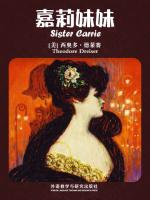view
Theodore Dreiser's Sister Carrie: A Compelling Depiction of Ambition and Reality
Introduction:
Theodore Dreiser's "Sister Carrie" is a captivating novel that explores the complexities of human ambition and the harsh realities of urban life. Set in the bustling city of Chicago, it follows the journey of Carrie, a young woman from the countryside, as she navigates the challenges of the big city.
Plot Overview:
Carrie arrives in Chicago with dreams of a better life. She encounters various characters, including the salesman Drouet and the hotel manager Hurstwood, who both become important figures in her life. Through relationships, challenges, and setbacks, Carrie learns that success comes at a price. She eventually rises to stardom as a successful actress but faces emptiness and loneliness.
Character Analysis:
Carrie is a complex character, evolving from a naive country girl to a determined woman. Her relationships with Drouet and Hurstwood reveal her vulnerability and strength. Hurstwood's character stands in contrast to Carrie's growth, exhibiting weaknesses that lead to his downfall.
Writing Style:
Dreiser's writing style is naturalistic and unflinching, reflecting the rawness of urban life. His descriptive narratives bring Chicago's streets and characters to life, while his portrayal of Carrie's inner world is both sympathetic and critical.
Themes & Symbols:
Themes of ambition, compromise, and loneliness are prevalent throughout the novel. Carrie's journey symbolizes the pursuit of the American Dream, while the city of Chicago represents the promise and perils of urban life.
Conclusion:
"Sister Carrie" is a thought-provoking novel that examines the human cost of ambition and success. Through Carrie's story, Dreiser offers a poignant commentary on the complexities of urban life and the challenges faced by those who dare to dream.



 京公网安备 11010802032529号
京公网安备 11010802032529号